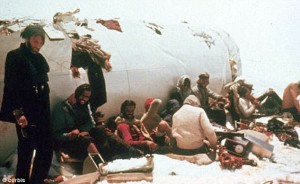From one of our initial discussions in class, the subject of cannibalism stuck out to me because I didn’t know too much about it. Having grown up in a modern, developed society, most of us have an intrinsic aversion to this concept (at least I would hope)— eating another human being’s flesh is unfathomable and inhumane. However, do all societies feel this way and has it always been this way? And the answer is no.
I think a good place to start would be from an evolutionary standpoint, after all human beings are simply organisms— a highly adapted and specialized species— nonetheless, mere animals. In the animal kingdom, the ingestion of other members of species is not uncommon, and is in fact, a strategy for survival. In many species, eating another member is natural, even logical, in that you’re increasing your own fitness, while eliminating competition. This practice is seen in cobras, fish, praying mantis, spiders, cats, lobsters, octopuses, sharks, polar bears, and crabs, to name a few. So, I guess I can understand how an argument could be made that it wouldn’t be that weird for a human to eat another human (I mean I still think it’s incredibly unsettling though). But my research showed that, in fact, cannibalism was a rather common part of human history.
Both archeological and genetic accounts indicate that cannibalism has been practiced for thousands of years and were an important part of rituals and cultures (ex. removing the flesh, by eating, before burying the bones) and of survival (during periods of food shortages and starvation). There are many instances throughout history that we see cannibalism (Fun fact: for a while in the 16th century, Egyptian mummies were ground up and sold as medicine) and even some cannibalistic accounts exist still even today. While researching for this post, I ran into an interesting book written by Beth Conklin: Consuming Grief: Compassionate Cannibalism in an Amazonian Society, which depicts modern cannibalistic practices in the Wari’ Indian tribe of the Amazonian rainforest, as an expression of compassion and a way for the loved ones to grieve and accept their loss. She explores their concept and culture of person, body, and spirit to explain why they prefer cannibalism to cremation or other burial practices, which I thought was a novel, yet interesting, take on this concept.
Then, when did we begin to see our Western cultural aversion in society? I contend that it was a myriad of factors: the increase in life longevity, religious practices and views, legal restrictions on fundamental human rights, and perhaps most importantly, an increase in interpersonal relations. In the past, disease was rampant, which meant lifespans were short. You didn’t really have time to form bonds and relations with other people, whether it be with your family or friends. Because the increase in scientific and medical knowledge and technology, our life expectancies are longer and intimate relationships are more likely to continue for years. This allowed for the development and stability of interpersonal relationships, which remain an important resource across our lifespan now, significantly reducing the need/ desire for cannibalism.




